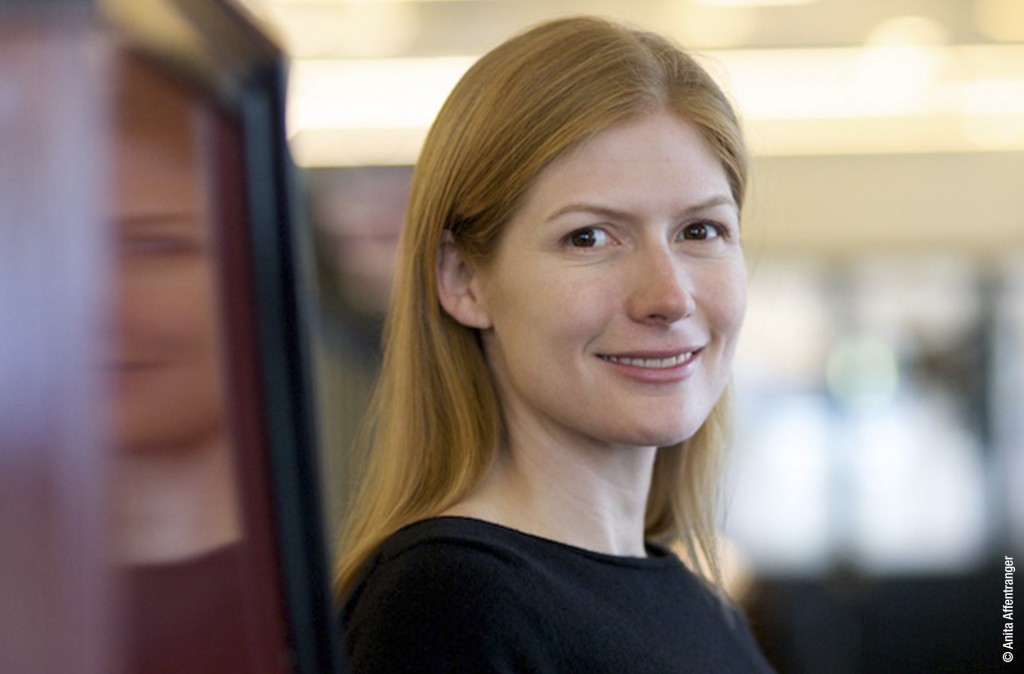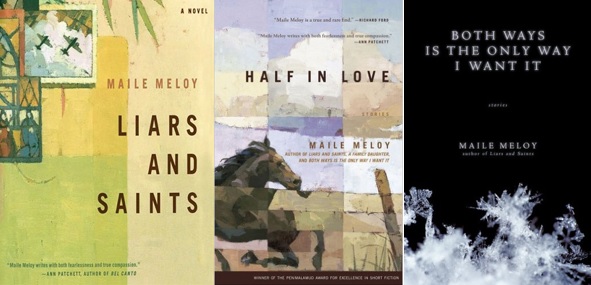If you don’t know Maile Meloy yet, you’re missing out. For whatever reason, I didn’t discover her writing until last year. I’ve now read 3 of her works: Liars and Saints (novel), Half in Love (short story collection), and Both Ways is the Only Way I Want It (short story collection). There is something so simple, yet complex, about her writing. Powerful subtlety, that’s what it is. Whenever I find an author I love, I scour the Internet for insights into their writing process and what makes them great. Here’s some of what I found about Maile Meloy.
On how writing short stories influences her novels, and vice versa:
“Having written two novels might be the reason the stories are a little longer now. But I think that writing short stories has affected the novels more: both novels have slightly story-like chapters, and I think writing short stories trains you to a kind of efficiency, because everything needs to count.” (Source)
On what she prefers to write–novels or short stories:
“I like going back and forth between the two. It’s like the difference between a long marriage and dating, and there are advantages to each. With a novel, you know you have the book there to work on every morning. With stories, you have new characters and fresh situations. (Although some of my stories have taken me as long as the novels, as I’ve put them aside and picked them up again.) Some of the stories in Both Ways Is the Only Way I Want It were written (or started) before and between the novels, and some after.” (Source)
“I think 10-15 pages is sort of my natural length, in the way a runner might run the 800- or the 100-meter dash. Short stories are harder because you have to start over every time, with new characters and new situations, but they’re what I did first. And you can see the end of them. I like living in a novel, as a writer and as a reader, but sometimes you can’t see your way out.” (Source)
On first drafts:
“They’re spare. I often start with not that much more than dialogue. Then I have to go back and put in details about what things look like and where everyone is and what they’re wearing. What happens between people is the most interesting thing to me. I have to make sure that readers can see the scene, and feel it, but I don’t really care what the trees look like. I can make myself care if the trees are really important.” (Source)
On how her stories begin:
“They almost always begin with a scene or a situation, often very small, always involving at least two people. But the stories don’t go unless I have the voice. It’s like a getting into a car with a tricky clutch, and you can either get it in gear or you can’t. I think the voice has a lot to do with whether I can get the story in gear and make it go.” (Source)
On struggling with titles:
“I’m very slow about titles, and I welcome suggestions from people who’ve read early drafts. Sarah, my editor, usually comes up with a very long list—I don’t know how she does it.” (Source)
On writing from the male point of view:
“I didn’t realize there were so many male protagonists until I put all the stories together. I think part of the reason I like a male perspective is that it gets me out of myself.” (Source)
On (not) outlining:
“I wish I could. It might be more efficient. I figure the story out as I go along, and then revise heavily when I know what it is. The story “O Tannenbaum,” in Both Ways Is the Only Way I Want It, started with the idea of a family out cutting down a Christmas tree, and choosing one that’s crowding another tree, so that the tree left behind would have room to grow. We used to do that, when I was growing up in Montana, and it seemed like a promising idea, but I didn’t have anything more in mind than that. The hitchhikers showed up for me as they do in the story, under a tree in the snow. And then I have to figure out what to do with them, why they’re there.” (Source)
On figuring it out as she goes:
“I develop everything as I go and figure out the characters as I write the story. Who they are is inseparable from what they do and how they respond to what happens. Sometimes things occur to me when I’m taking a walk or doing something else, but mostly I work it out on the page.” (Source)
On rules for creating characters:
“One [is] that you can’t have your characters get everything they want at the end, and another [is] that they can’t be perfectly bad or perfectly good.” (Source)
On writing YA (Apothecary):
“I don’t know what will happen when I try to write another novel for adults, but I think the YA books have given my plot-designing muscles a workout. As Roald Dahl said of writing for kids, “They lose interest so quickly. You have to keep things ticking along.” (Source)
On her ideal workspace:
“I have a chair that tilts back like an astronaut chair, and a desk that comes over on an arm, with a laptop on it. I started using that set-up because it was easier on my shoulders to be in the tilted-back position, but now I can’t compose anything beyond an email if I’m sitting up straight. Sideways on a couch with a lap desk works in a pinch.” (Source)
On advice she would offer aspiring writers:
“Set aside time to write, even if it’s only an hour or two a day, and think of the time as the requirement. So you just have to be there, and it doesn’t matter what you finish. It takes the pressure off the individual story or chapter, and you’ll end up working on the ideas that seem most promising. I start many, many stories and abandon most of them, but eventually some pay off.” (Source)
“Read all you can. Anyone who writes dialogue is probably a natural mimic, so I think it’s good to read as many different kinds of writers as you can, on your way to finding your own voice. You couldn’t possibly mimic all of them, but you can see what other people do. Also write all you can. It’s like playing an instrument, and you have to practice, and the way you practice writing is to write stories and throw many of them away. Also pay attention to the world, to the stories people tell you, to how they do the things they do all day.” (Source)
“Write all you can: essays, stories, poems, whatever. Don’t worry about whether it’s good while you’re writing it, just keep going. Then let some time pass and go back to read it over, and you’ll see things you want to fix. Time is the great editor.” (Source)
On feedback from readers:
“I hear from people a lot, even though I’m not on Facebook and don’t tweet and don’t have a blog. I do think it’s much more possible to be in touch than it used to be, but I’m not sure that’s important to the work itself. You don’t want to be too eager to please, or too afraid of criticism. For publishing reasons, it took two years for my first story collection to come out, after I sold it, and I wrote my first novel in the meantime.
I like hearing from readers now, but I’m really glad I had that protected space for two books and not just one. I think it was good to keep writing on my own, without any expectations or opinions coming in.” (Source)
Fun facts:
- She was born and raised in Helena, Montana in the early 1970s
- Her name is pronounced MY-lee. It’s Hawaiian
- While studying at Harvard, she took a fiction class with Richard Ford. He saw her talent and encouraged her to study at the University of California, Irvine with his good friend, Geoffrey Wolff
- Meloy had an agent before she even finished her time at UC Irvine. And not just any agent, but super-agent Amanda “Binky” Urban

